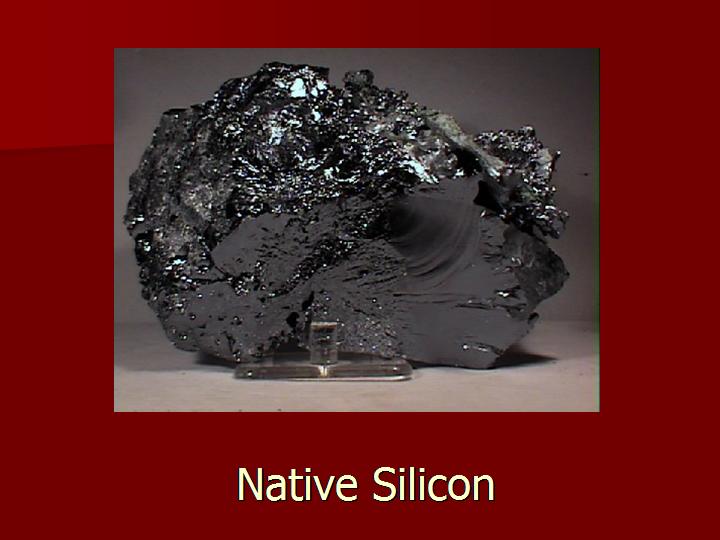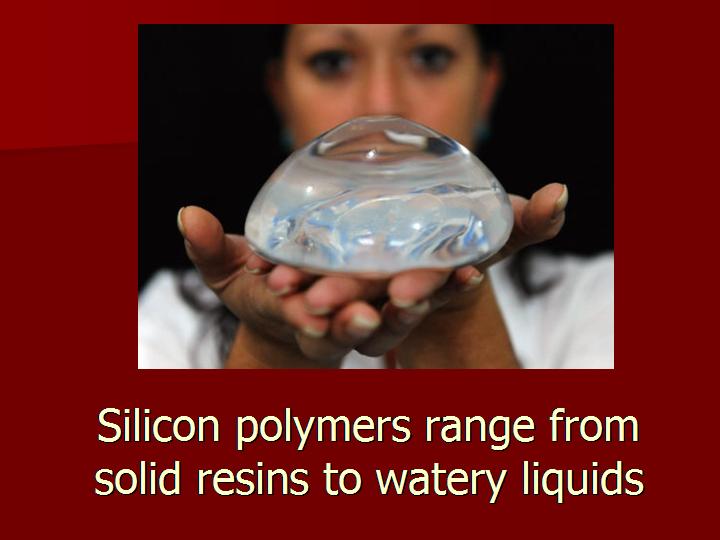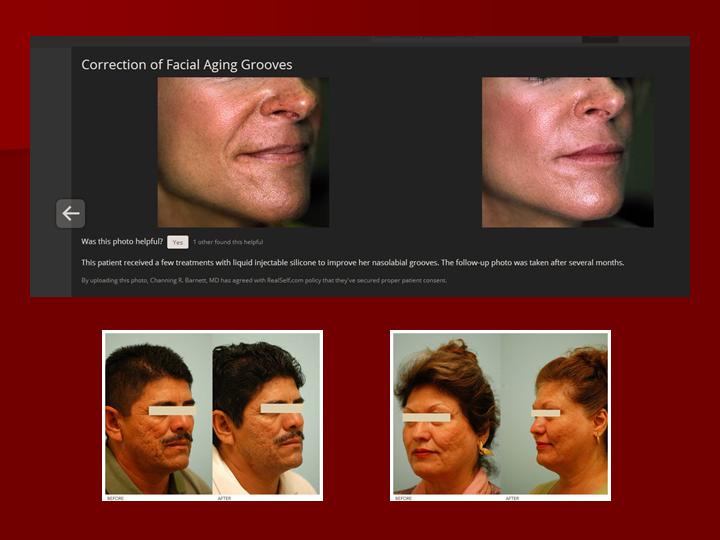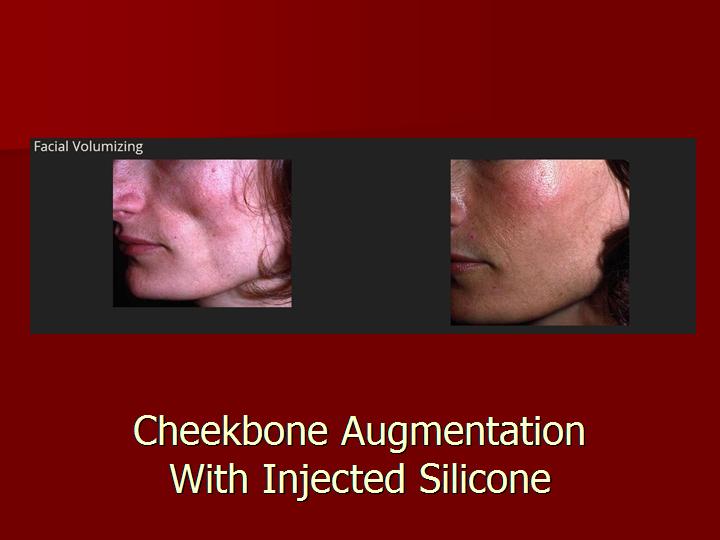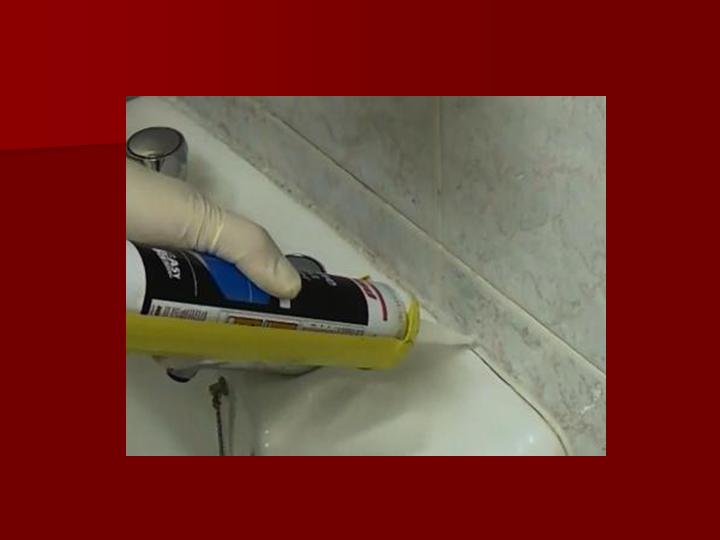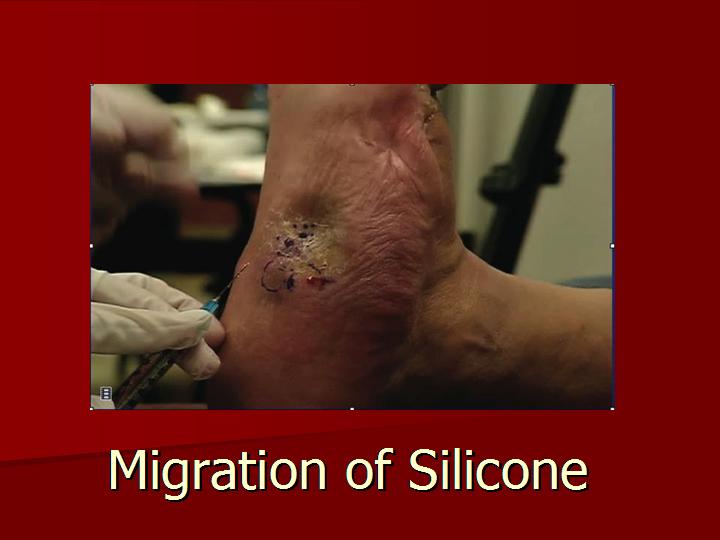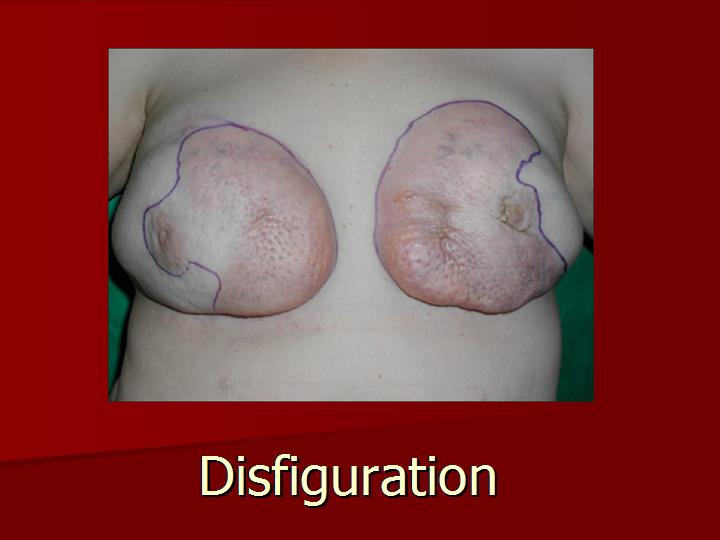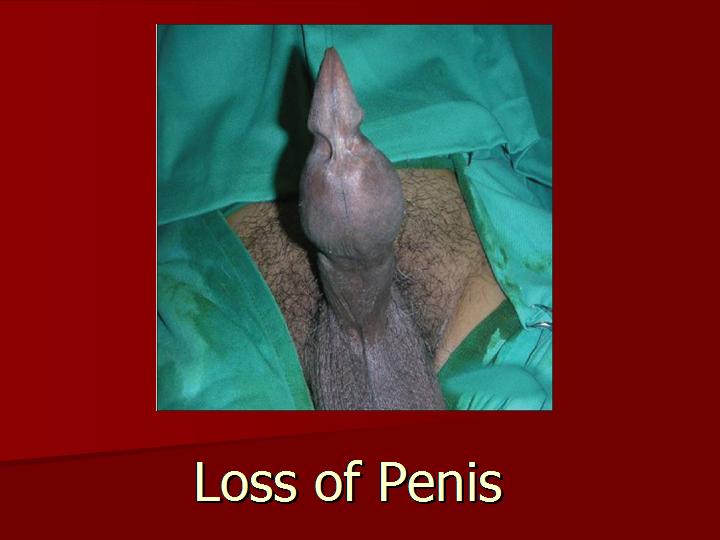Dangerous Curves: The Trouble with Injectable Silicone (2014)
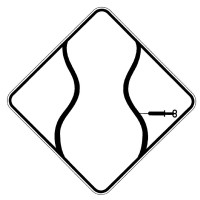
©2014 by Dallas Denny
Sources:
Denny, Dallas. (2014, 26 April). Dangerous curves: Injectable silicone can lead to disfigurement and death. Workshop presented at Trans Lives Conference, Farmington, CT.
Denny, Dallas. (2014, 4 September). Injectable silicone: Dangerous curves ahead. Paper presented at Southern Comfort Conference, 3-7 September, 2014, Atlanta, GA.
Dangerous Curves
The Trouble with Injected Silicone
I’d like to warn those who are squeamish—this presentation contains graphic images.
I’ve been warning trans populations about silicone injections since 1991. This is the inside front cover of the second issue of Chrysalis Quarterly, a magazine I founded and edited as director of the nonprofit American Educational Gender Information Service. This ad was designed by Margaux Schaffer. It was Margaux who made me aware of the problem.
Why would I warn people about injected silicone? Because once injected it’s devilishly difficult and disfiguring to even partially remove—in other words, it’s permanent; you can’t get un-pumped—and because it often has disastrous consequences. These can include infection, death, usually from respiratory failure; autoimmune disorders, loss of limbs, as we saw in the opening slide, extrusion through the skin, migration throughout the body, and disfigurement. These have been long documented in the medical literature, and, increasingly, in the press and on the internet. I won’t talk about the medical literature today —a somewhat dated review can be found in my 1992 article “Cheekbones from Hell,” which is available on this website—but I will talk about the sorts of problems injected silicone can and does cause.
Silicon is the 14th element and the 5th most abundant. Because of the ease with which it bonds with other elements, it is rarely seen in its pure form. More than 90% of the earth’s crust consists of silicate materials, Silicon, in the form of quartz (SiO2), is the primary component of sand. Silicon is the primary component of glass.
Like carbon, which is directly above it in the periodic table, silicone has the ability to form long-chain polymers.
Scientists say silicone-based life forms are entirely possible.
Depending on the length of the polymer chain, silicon compounds range from solid resins to watery liquids. These are the silicones.
Silicone has many industrial uses, but one of the first was as an insulator in electrical transformers.
After WWII ended, U.S. Army quartermasters noticed drums of transformer insulating fluid vanishing from the docks at Yokahama Harbor in Japan. Upon investigation, they discovered the fluid was being injected into the breasts of Asian prostitutes who sought a more Western appearance to cater to American Servicemen. Sharon Webb, who wrote a paper on the history of silicone injections, noted that her father, who was a medical officer in Japan just after the war, knew a quartermaster who injected fluid into breasts.
And so it started.
Silicone offered a safer alternative to the paraffin injections that were common in the East at that time. It wasn’t long before silicone was being injected all around the world. It was used to enlarge breasts, lips, thighs, and buttocks, or create the appearance of high cheekbones or to disguise heavy brow ridges or adam’s apples; it was in fact injected just about everywhere: “Hips, lips, and fingertips, darling,” an acquaintance once said. “Hips, lips, and fingertips.”
Here are two silicone aficionados from Serbia.
In the 1960s plastic surgeons, especially in Las Vegas, did large numbers of breast augmentations using liquid silicone, but eventually, because of a warning from the FDA in 1965, almost all physicians got out of the silicone business and stayed out for many years. Today, some physicians inject small amounts of silicone to fill in facial reasons, pockmarks and other skin defects. The procedure at the top was done by a daughter-father dermatology team whose practice is in Manhattan, on the expensive Upper East Side.
Lately, physicians have been getting more daring, enhancing facial contours with silicone. This cheek enhancement was done by the same daughter-father team
It’s legal (although the FDA cautions against it) for physicians to inject small amounts of silicone into the human body. It’s illegal for non-physicians to inject it.
I should say here I’m taking about injections of silicone straight into the body, and not about silicone-filled breast implants or chin and other implants made of solid silicone, as in the slide above. Silicone breast implants were banned by the FDA for 14 years because of pain, swelling and numbness after their implants burst; that ban was lifted in 2006. Solid silicone implants are regularly used by plastic surgeons to enhance body contours.
Today silicone injections are occurring in epidemic proportions. Typically, large amounts (liters, sometimes) are administered by non-licensed and usually non-medically trained “practitioners” who use big-bore needles to pump large quantities of non-medical grade silicone into virtually every part of the body. Pumping parties are advertised by word of mouth and typically held in apartments and the back rooms of nightclubs and beauty salons. Injections can cost up to $1000 per session, and multiple sessions are almost always required. The cumulative price often surpasses that of plastic surgical procedures which are safe and promise results that are less garishly unrealistic.
Because silicone tends to seep out of the large holes at the injection sites, Krazy Glue is often used to hold the pierced skin together. The woman in this photo wrote, “Got 4500 cc done in total and loving it!” 4500 cc is equivalent to 1.18 gallons. In his book about Brazilian transwomen, anthropologist Don Kulick reports use of more than 4 liters in many cases. That’s an amazing amount of foreign material to have in one’s body.
Silicone promises instant curves—and given some skill by the person doing the injection, it can provide those curves. Here are two transwomen whose stories were recently documented by the project Visible Bodies: Transgender Narratives Retold. Note their cheekbones. Sometimes less is more.
Yes,sometimes less is more.
Silicone injections are common in populations with low economic status, and especially among sex workers, transwomen, drag performers, Asian and Latin communities, and among people of color.
I’m well aware of the temptations of silicone for the economically underprivileged and in particular for transpeople, who historically have difficulty finding employment other than sex work. Here are two paragraphs from my 2006 paper “Down and Coming Out at the Ross Fireproof Hotel.”
I’m treating Miss Charlotte to a meal for her birthday. Looking fabulous, if artificial with her ridiculous, pumped-up cheekbones, and with two Cape Cods inside her, she’s reading me for my stand against injected silicones. It’s dangerous and disfiguring, according to the FDA, but from Miss Charlotte, I hear a litany of her friends who, she tells me, haven’t experienced problems, who are beautiful because of being pumped, whose lives, like hers, have been enhanced by silicone. She makes the valid point that she knew the risks before her first injection. Miss Charlotte makes it clear she’s interested in the present, and not what she will look like when she’s fifty. She conveniently forgets those times she’s called me at four a.m., drunk and in tears because her life is going nowhere. She also forgets, or maybe has never noticed, that I’m fast approaching the half-century mark.
Miss Charlotte’s cheekbones are more prominent than even those of her contemporaries, for her boyfriend once hit her, shifting the silicone, and the transwoman who injects her gave her more on both sides to even things out. She cannot suck dicks for very long, she tells me after her third Cape Cod, for it makes her jaw hurt. I wonder if this will qualify as a work-related disability. Her chin is unbelievably long, a silicone pumping gone awry. She got it, she once told me bitterly, to look more like Cher, not the Wicked Witch of the West. She wishes she hadn’t done it, but she isn’t mentioning that now.
I’m not making fun of the woman I call Miss Charlotte here. I respect her need for fast feminization and for her courage to be herself and her bad luck with silicone. Still, her life so far has been a tragic one. I’ve lost contact with her and I often hope she’s all right. She would herself be approaching 50 today.
So far as Miss Charlotte goes, she considered me good-hearted but misguided and sought me out in an attempt to educate me about silicone. I respect her for that, too.
Silicone curves are often unlike anything found in nature. They sometimes look subtly wrong, and sometimes overtly wrong.
Some women become silicone junkies. They don’t know when to stop. This is one of the more horrific photos of socialite Jocelyne Wildenstein.
Wildenstein is sometimes referred to as Cat Woman. Here she is in 2012. She has somehow toned down her look. I suspect she has had portions of her face peeled away by a plastic surgeon so he or she could scrape some of the silicone globules away. That would explain the scars near her lips.
I’ve already spoken about injections by unlicensed and often non-medically trained people. All too often, they are transwomen.
But the problem goes beyond untrained and unethical “practitioners.”
Much of the time, industrial grade silicone is used. This is not the gel that is inside breast implants, but the tubes of sealer you buy at big-box home supply and auto parts stores. It’s the same product you use when you caulk your bathtub.
Often what is injected isn’t even silicone. Paraffin, peanut, croton and olive, mineral and common cooking oils, lanolin, beeswax, glazier’s putty, cobra venom, and other substances have all been used—usually with grave consequences.
Here are some images of injections gone wrong. I warn you again; the images are graphic.
For many years silicone flew below the radars of most of the world’s law enforcement and medical communities. Pumpers were rarely prosecuted, even when they caused deaths.
Things began to change in 1993, when a transwoman named Sofia Pastel from Norfolk, Virginia came to Atlanta to get pumped. After having massive quantities of silicone injected into her buttocks and thighs, she developed respiratory problems and died. I was interviewed by a reporter from the Atlanta Constitution newspaper, and the Associated Press picked up the story—meaning news of Sofia’s death appeared in papers around the world and was on radio and television.
I learned just how widespread the story had become when three people in a row called me to tell me they had just heard my name on the Rush Limbaugh Show. My response to each was, “Why in the world were you listening to Rush Limbaugh?” Rush had read my comments about industrial-grade silicone and according to all three of my acquaintances said, “Hmmpf. Dallas Denny. American Educational Gender Information Service. I’d like to see that operation.”
If I had been listening and could have gotten through on the phone I would have said, “Rush, if you want to see my operation you’re going to have to at least buy me a drink!”
A few weeks later I got a call from Dr. Mark Konopen at the Georgia State Medical Examiner’s Office. He was working with police and the Centers for Disease Control, trying to figure out what was going on in regard to Sofia’s death. We met, and I told him all I knew about silicone. That galvanized the investigation. The killer, who was a trans woman, was soon arrested.
Largely as a result of Dr. Konopen’s efforts, medical and legal authorities began to gain awareness of the severity of the silicone problem in trans and other communities. As the result of news headlines, journal articles, and presentations at law enforcement conferences, prosecutors’ office and police departments and medical examiners’ offices all over the Eastern U.S. are now quick to understand what has gone on when a young woman with Krazy Glued cotton patches all over her breasts or buttocks dies from infection or pulmonary distress. Today, many cases lead to the culprits being apprehended, tried, convicted, and sentenced.
I’m not sure this is yet happening in Mid and Western U.S. states. The accounts I’ve read about have all been from Eastern states. That may be coincidence or bias toward the East Coast in the Google search algorithms. Certainly silicone is as a big problem on the West Coast as it is on in the East.
I don’t have a dramatic end to this presentation. Silicone use has not decreased. It is, rather, increasing. Young people, mostly women with low incomes from trans or people of color or sex worker communities—and the occasional man— continue to get pumped. For some, silicone gives instant curves. For others, it means disfigurement and death. Until we stop holding ourselves to unrealistic expectations of beauty, this will continue to happen.
Thank you.





